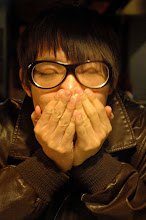The urban space is a specific space and place for people’s life and experience rather than a stationary or purely material aggregation. It is just the interaction between people and such space and places that contributes to the materialization and significance of the urban space as well as causes people’s self-cognition and their cognition of the world. However, the acceleration of people’s movement in the city makes people’s experience of the urban space become an exclusively visual and abstract activity separated from their bodies as well as an pre-designed activity or an activity with specific purpose. People and the urban space become more and more alienated from each other. Meanwhile, the lack of the interactive relationship between people and the urban space becomes a main problem of modern urban space.
In the 19th century, the large-scale and machine-oriented industrial production accelerated the gradual expansion of the urbanization. In this particular historical context, people had experienced new social phenomena and relationships as well as realized that they had become the new modern subject. Such new social relationship and social order created a new space form, the core of which was no longer the religion. Meanwhile, economic activities nearly became the most important behaviors of daily life; the social space was also reconstructed according to modern or large-scale and machine-oriented production modes. Therefore, the city was fundamentally changed on the aspects of scale, dimension as well as space pattern. The backyard gardens of town house, open squares, parks and markets in Middle Ages gradually disappeared, which were replaced by wide and straight commercial streets.
The movement speed is greatly promoted because of the boulevard occurrence. From the pleasant sensation that the carriage is running on a perfectly straight road to the anxiety caused by the quickly driving of automobiles, the modern people have experienced the unprecedented speed state. With the change of movement speed and the re-integration of space, people are much more likely to watch the scenes in the car, but need not to interact with the space environment by moving the bodies or to touch the bodies of pedestrians. Therefore, the eyes become the major organ that obtains the information for people, leading to that other sensory experience becomes slow and vestigial, the sensory experience of the human body also becomes week as well the methods to understand the urban space also turn into the oneness. Under such situation, watching becomes the major method for people to obtain the external information. Rolland Barthes named this method of watching as image repertoire of representation: when the unfamiliar scenes in the street are scanned, the eyes will filter all the visual information and simplify it into the simple representation. For example, with such image repertoire of representation, we will quickly determine the development state of the city through the style of buildings in the city. Since 19th century, the modern people have been adopting such watching method. Although it can help us obtain the information in the minimum duration according to the images, the interaction between people and space as well as among the people will gradually stop and the whole city will be a picture of still scenes. The environment stimulates people, but does not need the feedback from people. However, the relationship between bodies and the urban space breaks at this point.
wu kong full movie download in hindi
3 years ago

No comments:
Post a Comment